Papers by Nataliia Mykhailova

The Antlered Mother: From the Paleolithic to the Modern Era
The mythological subjects of Deer-Mother or Deer-Wife, who play roles such as the ancestress of p... more The mythological subjects of Deer-Mother or Deer-Wife, who play roles such as the ancestress of people and animals, the protector of game, and the patroness of hunting can be found throughout Eurasia. One such manifestation of this Mistress of Animals is the Antlered Mother who appeared in the Stone Age. This character was widespread in north Eurasian rock art in Neolithic times and persisted into the Bronze and Iron Ages. The totemic myth about the origin of humans and animals from a common ancestor was one of the most important and widespread mythological subjects of the Northern peoples, who, until modern times, were deer hunters. The most ancient story talks about a giant female being: the “Animal-Mother.” Over time, the image of this totemic ancestor, the Great Mother, developed more human characteristics. There was a Saami, a mother-ancestress or Myandash-maiden, who had marital relations with reindeer. The Kirgiz tell stories about this Antlered Mother. Moreover, myths about Deer-Woman—the hostess of animals—have survived in Caucasian mythology. The subject of the Antlered Goddess is extremely popular in Britain. The character of the British Deer-Woman reflects all developmental stages of the ancient totemic ancestor image. Despite their origins in antiquity, stories about these mythological beings have been preserved in folk traditions and some persist to this day. This investigation mines the existing archaeological and mythological datasets in an effort to shed light on these animal masters.
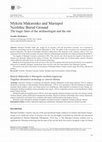
Archaeologia Lituana, Mar 13, 2024
Mariupol Neolithic burial site, unique by its exclusive rich and diversiform inventory, was excav... more Mariupol Neolithic burial site, unique by its exclusive rich and diversiform inventory, was excavated by Ukrainian archaeologist and art critic Mykola Makarenko in 1930. The author of the excavations was executed by Soviet punitive authorities. The top-level and highly informative publication of the materials on the cemetery, made in 1933, was confiscated. Part of the burial inventory was taken to Russia. Anthropological materials were destroyed during World War II. The tragedy of Mariupol Cemetery continued in 2022. This was the year which became the tragedy in the history of Ukraine and inherently influenced the history of Europe. The Ukrainian people, the Ukrainian nature, and the Ukrainian culture suffered irretrievable losses. So did Ukrainian archaeology. Hundreds of archaeological sites in the war zone, in the zone of occupation and in the annexed territories were completely destroyed or irreparably damaged. Among them, there were the scant surviving artifacts from Mariupol Cemetery. This article is devoted to the history of excavations of Mariupol Burial Complex and the tragic fate of the collection of artifacts.
Supernatural Gamekeepers: Conclusions from an Archaeological Perspective
Conflict, Environment, and Social Complexity
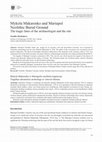
Archaeologia Lituana, 2023
Mariupol Neolithic burial site, unique by its exclusive rich and diversiform inventory, was excav... more Mariupol Neolithic burial site, unique by its exclusive rich and diversiform inventory, was excavated by Ukrainian archaeologist and art critic Mykola Makarenko in 1930. The author of the excavations was executed by Soviet punitive authorities. The top-level and highly informative publication of the materials on the cemetery, made in 1933, was confiscated. Part of the burial inventory was taken to Russia. Anthropological materials were destroyed during World War II. The tragedy of Mariupol Cemetery continued in 2022. This was the year which became the tragedy in the history of Ukraine and inherently influenced the history of Europe. The Ukrainian people, the Ukrainian nature, and the Ukrainian culture suffered irretrievable losses. So did Ukrainian archaeology. Hundreds of archaeological sites in the war zone, in the zone of occupation and in the annexed territories were completely destroyed or irreparably damaged. Among them, there were the scant surviving artifacts from Mariupol Cemetery. This article is devoted to the history of excavations of Mariupol Burial Complex and the tragic fate of the collection of artifacts.
Ritual on the Rock. Reflection of Totemic Rites of the Deer Cult in the Rock Art of Northern Eurasia
Stratum plus, Apr 30, 2022
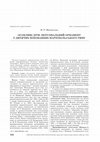
Archaeology and Early History of Ukraine, 2020
The region of the Lower Dnieper was an outstanding landscape phenomenon in prehistoric times. Dur... more The region of the Lower Dnieper was an outstanding landscape phenomenon in prehistoric times. During the Stone Age, this area had great economic and sacral significance. There are more than 20 Mesolithic and Neolithic cemeteries of the so called Mariupol type, located along the Lower Dnieper Rapids. The anthropological analysis demonstrated that the population of Middle Dnieper region belongs to the Proto-European large Europoid race. Periodisation of the Mariupol type cemeteries have two periods: Early Mariupol: 7000—5500 cal BC and Late Mariupol: 5500—4000 cal BC. The burials of the Mariupol type have outstanding grave goods. Raw materials used for used for manufacturing adornments were deer canines, carp fish teeth, stone, pearls and shells. Some burials yielded notched decorated canines. The most outstanding feature of the Mariupol type funerary adornments is the large number of items made from modified boar tusks. Most of them were found in the Mariupol cemetery. These artifact...

The History and Environmental Impacts of Hunting Deities pp 9–25, 2023
The mythological subjects of Deer-Mother or Deer-Wife, who play roles such as the ancestress of p... more The mythological subjects of Deer-Mother or Deer-Wife, who play roles such as the ancestress of people and animals, the protector of game, and the patroness of hunting can be found throughout Eurasia. One such manifestation of this Mistress of Animals is the Antlered Mother who appeared in the Stone Age. This character was widespread in north Eurasian rock art in Neolithic times and persisted into the Bronze and Iron Ages. The totemic myth about the origin of humans and animals from a common ancestor was one of the most important and widespread mythological subjects of the Northern peoples, who, until modern times, were deer hunters. The most ancient story talks about a giant female being: the “Animal-Mother.” Over time, the image of this totemic ancestor, the Great Mother, developed more human characteristics. There was a Saami, a mother-ancestress or Myandash-maiden, who had marital relations with reindeer. The Kirgiz tell stories about this Antlered Mother. Moreover, myths about Deer-Woman—the hostess of animals—have survived in Caucasian mythology. The subject of the Antlered Goddess is extremely popular in Britain. The character of the British Deer-Woman reflects all developmental stages of the ancient totemic ancestor image. Despite their origins in antiquity, stories about these mythological beings have been preserved in folk traditions and some persist to this day. This investigation mines the existing archaeological and mythological datasets in an effort to shed light on these animal masters.
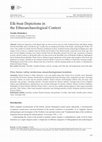
Archaeologia Lituana
Numerous depictions of elk-shaped ships are discovered in rock art of the Northern Europe and Sib... more Numerous depictions of elk-shaped ships are discovered in rock art of the Northern Europe and Siberia, dating from the Mesolithic time to the Bronze age. Usually they are interpreted as Boats of the Deads, connecting the Worlds. The water is the symbol of a border between Worlds in traditional societies. Northern Europe archaeological findings prove that images of the Cervid as a mediator between Worlds and the Boat of the Deads became connected in the Stone Age. Red deer (Cervus Elaphus) remnants were found in burials from the Mesolithic period to the Iron Age. Cemeteries of humans in boats with deer antlers or elk-headed stuffs were discovered at the Mesolithic sites of Denmark (Vedbaeck, Mollegabet) and in Northern Russia (Bolshoy Oleniy Ostrov). Being of a great significance in the mytho-ritual complex of the Stone Age population in Europe, Elk-Boat as the transport between Worlds is preserved in folklore of South-East European people. Mythological motif of the Cervid, sailing o...
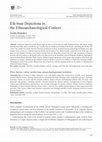
Archaeologia Lithuana, 2022
Numerous depictions of elk-shaped ships are discovered in rock art of the Northern Europe and Sib... more Numerous depictions of elk-shaped ships are discovered in rock art of the Northern Europe and Siberia, dating from the Mesolithic time to the Bronze age. Usually they are interpreted as Boats of the Deads, connecting the Worlds. The water is the symbol of a border between Worlds in traditional societies. Northern Europe archaeological findings prove that images of the Cervid as a mediator between Worlds and the Boat of the Deads became connected in the Stone Age. Red deer (Cervus Elaphus) remnants were found in burials from the Mesolithic period to the Iron Age. Cemeteries of humans in boats with deer antlers or elk-headed stuffs were discovered at the Mesolithic sites of Denmark (Vedbaeck, Mollegabet) and in Northern Russia (Bolshoy Oleniy Ostrov). Being of a great significance in the mytho-ritual complex of the Stone Age population in Europe, Elk-Boat as the transport between Worlds is preserved in folklore of SouthEast European people. Mythological motif of the Cervid, sailing on the Sea or the River, with the sleeping maiden on his antlers, is widespread in South and Eastern Europe.

Buried in the Elk and Reindeer Hides in the Iron Age and the Early Middle Ages in Northern Europe: an Ethno-Archaeological Aspect
Stratum plus. Archaeology and Cultural Anthropology
Archaeological evidence of the use of animal hides in burials have recently become known in the L... more Archaeological evidence of the use of animal hides in burials have recently become known in the Late Iron Age and the Middle Ages (800—1300 AD) in Finland and Karelia (Russia). The purpose of the article is to interpret the ritual of wrapping the dead in hides of Eurasian elk and reindeer. For the first time, the authors use a combination of innovative methods of archaeozoological analysis to study the remains of fur, and the method of ethnoarchaeological reconstruction to study the burial rite. Wrapping bodies in hides of wild animals is a widespread long-term tradition, which was practiced in Northern Europe by the Stone Age hunters. This funerary rite was supposed to ensure the “transformation” of a person into an ancestor animal. Reminiscences of hunting religious beliefs were preserved in the ideology of Northern Europe after the transition to agriculture.
A diachronic study of hunting and human-animal-relationships in Northern Europe and Baltic Sea area. Session 13 Human, beast and landscape A diachronic study of hunting and human-animal-relations- hips in Northern Europe and Baltic Sea area (Session organizers: U. Schmölcke, O. Grimm) I, 2018

Погребения в шкурах лося и северного оленя в железном веке и раннем средневековье в Северной Европе: этно-археологический аспект
Stratum +, 2021
N. R. Mykhailova, T. Kirkinen, K. Mannermaa
Buried in the Elk and Reindeer Hides in the Iron Age ... more N. R. Mykhailova, T. Kirkinen, K. Mannermaa
Buried in the Elk and Reindeer Hides in the Iron Age and the Early Middle Ages in Northern Europe: an
Ethno-Archaeological Aspect
Archaeological evidence of the use of animal hides in burials have recently become known in the Late Iron Age and the
Middle Ages (800—1300 AD) in Finland and Karelia (Russia). The purpose of the article is to interpret the ritual of wrapping
the dead in hides from Eurasian elk and reindeer. For the first time, the authors use a combination of innovative methods of
archaeozoological analysis to study the remains of fur, and the method of ethnoarchaeological reconstruction to study the
burial rite.
Wrapping bodies in hides from wild animals is a widespread long-term tradition, which was practiced in Northern Europe
by the Stone Age hunters. This funerary rite was supposed to ensure the “transformation” of a person into an ancestor
animal. Reminiscences of hunting religious beliefs were preserved in the ideology of Northern Europe after the transition to
agriculture.
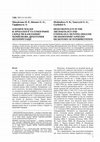
Кам'яна доба України,, 2021
DEER FRONTLETS IN THE ARCHAEOLOGY AND ETHNOLOGY:
HUNTING DISGUISE OR SHAMANISM? A PSEUDO DICHOTO... more DEER FRONTLETS IN THE ARCHAEOLOGY AND ETHNOLOGY:
HUNTING DISGUISE OR SHAMANISM? A PSEUDO DICHOTOMY OF INTERPRETATION
Headdresses with deer antlers are recognized archaeologically in Mesolithic Europe. There are well known deer masks
from Starr Carr (Great Britain), Hohen Viheln, Plau, Berlin-Birsdorf and Bedburg-Konigshoven (Germany). Deer headdresses
were typically made from stag frontlets with antlers and skin. Frontlets were smoothed and intended to be worn
on the head. The garment has specially drilled holes for straps to attach them to the head.
We can assume that deer frontlets were adornments with complex semantic status. In the profane sphere of life they
served as hunting aids to track quarry with greater stealth. Under the conditions of religious metaphor in shamanism and
totemism, the human acceptance of the likeness of the animal and the imitation of its behavior caused a sense of identification
of the hunter with this animal. The temporary “transition” from the world of people to the world of animals is
a central element of this symbiosis. During rituals, the semantic status of the headdress grew, with the hunter/ritualist
realizing themselves as being of “double nature” mediators between the world of people, the world of animals, and the
world of a celestial, deific universe. Finally, after distinguishing the category of certain people, who had a monopoly on
communicating with representatives of the “other” world (shamans and ritual adepts), these ritual embellishments, as
attributes of these persons, turn into adornments and sacred regalia with the highest religious status.
Siberian people as well as Californian, Great Basin, and American Southwest Indians used frontlets or antlers for the
imitation of the animal’s behavior — such objects were likely included in reproductive rituals and rites of passage. There
is also an expressive connection between hunting, hunting imagery and human sexual fecundity and game fertility.
A prehistoric bighorn sheep headdress has been discovered and dated from Utah in the United States. Bighorn are the
most commonly portrayed animal in the figurative arts of these Far Western cultures. The comparison of common features
of animals with great symbolic significance from such distant territories as northern Eurasia and America allows us to
recognize some of the more universal features of the hunting religion mytho-religious complex. Origin and development
of the cult of the deer in Northern Eurasia and the cult of the bighorn sheep in North America correlate with the increasing
economic and symbolic roles for these animals. The ideological and conceptual metaphoric significance of both these animals
was so important, that they spread their semantic field (their cognitive symbolism) onto the other big game animals.
Key words: Mesolithic, Europe, North America, deer frontlets, cult of the deer, cult of the bighorn, shamanism, hunting
rites, ethnoarchaeology.
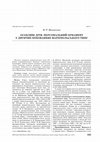
The region of the Lower Dnieper was an outstanding landscape phenomenon in prehistoric times. D... more The region of the Lower Dnieper was an outstanding landscape phenomenon in prehistoric times. During the Stone Age, this area had great economic and sacral significance. There are more than 20 Mesolithic and Neolithic cemeteries of the so called Mariupol type, located along the Lower Dnieper Rapids. The anthropological analysis demonstrated that the population of Middle Dnieper region belongs to the Proto-European large Europoid race. Periodisation of the Mariupol type cemeteries have two periods: Early Mariupol: 7000—5500 cal BC and Late Mariupol: 5500—4000 cal BC. The burials of the Mariupol type have outstanding grave goods. Raw materials used for used for manufacturing adornments were deer canines, carp fish teeth, stone, pearls and shells. Some burials yielded notched decorated canines. The most outstanding feature of the Mariupol type funerary adornments is the large number of items made from modified boar tusks. Most of them were found in the Mariupol cemetery. These artifacts, which may have marked the membership to a certain group, occurred equally both in adult and children burials. Child burials of the Mariupol type yielded specific funerary adornments. Sometimes they were as rich as those of the adults, but in some cases they were the richest. Personal ornaments, semantically identifying the important parts of a child’s body, were the marker of clan or lineage affiliation, age differentiation or biological stage. Burials with indicating features of a special sacral character are very significant also. The availability of children burials, which have more abundant funerary adornments then the adults, or were the only burials with grave goods in the cemetery need a more thorough study.Keywords: Mariupol type cemeteries, Neolithic, children’s burials, personal ornament, grave goods
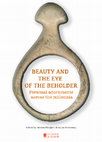
BEAUTY ANDTHE EYE OF THE BEHOLDER Personal adornments across the millennia, 2020
The Lower Dnieper region was an outstanding landscape phenomenon inprehistoric times. During the... more The Lower Dnieper region was an outstanding landscape phenomenon inprehistoric times. During the Stone Age, the area had great economic and sacral significance. The ca. 30 Mesolithic and Neolithic cemeteriesof the so called Mariupol typewere mostly located along the Lower Dnieper Rapids.The earliest and most numerous burial grounds were in the Dnieper region while some later cemeteries were located in its adjacent areas, to the west and east. Anthropological studies indicated that the population of the Middle Dnieper region was part of the Proto-European large Europoid race. Many of the dead were accompanied by rich grave goods: adornments made from bone, stone, pearl, carpteeth, deer canines and boar tusks. The study of these grave goods provides information onthe rites of the life cycle, and among others, the ceremonies marking the change of age and social status, gender identification and marital status. Very meaningful are the infant burials, as some of them have outstanding grave goods (at Mariupol, Vovnigi, Nenasytets,Osipivka and Vilnyanka). Personal ornaments may indicate kin involvement, mark the stages of age-gender identification of children or the sacral or inherited status of some “special” children.Keywords: Neolithic, Ukraine, Dnieper Rapids, cemeteries, burial rites, burial goods, personal ornaments,infant burials.
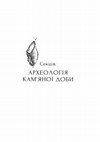
I Всеукраїнський Археологічний з'їзд. Матеріали роботи, 2019
Children’s burials of Mariupol type:
problems of the interpretation
There are more than 20 Meso... more Children’s burials of Mariupol type:
problems of the interpretation
There are more than 20 Mesolithic and Neolithic cemeteries, located along the Low
Dnipro Rapids. Most of the so called Mariupol type cemeteries belonged to fnal Mesolithic and Neolithic time. The most early and the most numerous burial grounds are in
the Dnipro region. Some later cemeteries were found on the territories to the West and
to the East. Graves were individual, double or collective. Most of the burials were in
supine position, abundantly covered by red ochre. Burial inventory consists of pendants,
made from bone, pearl, carp fsh teeth, deer canines and boar tasks. Also there were flint
and bone tools, stones and ceramic. Anthropological analysis demonstrated that population of Middle Dnipro region belongs to the Proto-European large Europeoid race. Periodisation of the Mariupol type cemeteries have two periods: Early Mariupol: 7000-
5500 cal. BC and Late Mariupol: 5500-4000 cal. BC. Numerous deceased were accompanied by rich burial inventory. Funeral inventory can serve as a source for studying the
rites of the life cycle (rites de passage), among others – the ceremonies, that have marked
the change of age and social status, gender identifcation, marital status. Very meaningful are children’s burials, some of them have outstanding burial inventory (Mariupil,
Vovnigi, Nenasytets, Osipivka, Vilnyanka). Personal ornament can be an evidence of kin
involvement, mark the stages of age-gender identifcation of children or point to a sacral
or inherited status of some “special” children.
Keywords: Neolithic, cemeteries, Mariupol type, children burials
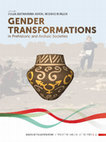
Scales of the transformation in Prehistoric and Archaic Societies, 2019
enables the bundled presentation of current research outcomes of the multiple aspects of socio-en... more enables the bundled presentation of current research outcomes of the multiple aspects of socio-environmental transformations in ancient societies. As editors of this publication platform, we are pleased to be able to publish monographs with detailed basic data and comprehensive interpretations from different case studies and landscapes as well as the extensive output from numerous scientific meetings and international workshops. The book series is dedicated to the fundamental research questions of CRC 1266, dealing with transformations on different temporal, spatial and social scales, here defined as processes leading to a substantial and enduring reorganization of socio-environmental interaction patterns. What are the substantial transformations that describe human development from 15,000 years ago to the beginning of the Common Era? How did interactions between the natural environment and human populations change over time? What role did humans play as cognitive actors trying to deal with changing social and environmental conditions? Which factors triggered the transformations that led to substantial societal and economic inequality? The understanding of human practices within often intertwined social and environmental contexts is one of the most fundamental aspects of archaeological research. Moreover, in current debates, the dynamics and feedback involved in human-environmental relationships have become a major issue, particularly when looking at the detectable and sometimes devastating consequences of human interference with nature. Archaeology, with its long-term perspective on human societies and landscapes, is in the unique position to trace and link comparable phenomena in the past, to study human involvement with the natural environment, to investigate the impact of humans on nature, and to outline the consequences of environmental change on human societies. Modern interdisciplinary research enables us to reach beyond simplistic monocausal lines of explanation and overcome evolutionary perspectives. Looking at the period from 15,000 to 1 BCE, CRC 1266 takes a diachronic view in order to investigate transformations involved in the development of Late Pleistocene hunter-gatherers, horticulturalists, early agriculturalists, early metallurgists as well as early state societies, thus covering a wide array of societal formations and environmental conditions. The volume Gender Transformations in Prehistoric and Archaic Societies shows that gender matters on all societal levels and throughout times; be it in reconstructed social and economic organisation in research on prehistoric times, in the investigation and recent perception of women's roles in past and modern societies or as expressed in the still low representation of females in higher academic positions of knowledge production in archaeology. The proceedings are the outcome of the inter-national Workshop on Gender Transformations in Prehistoric and Archaic Societies, which took place from 8-10 March 2018 in Kiel, Germany, organised within the framework of CRC 1266 Scales of Transformation. The workshop provided a platform to stimulate discussions on gender transformations in the past and the effects of gender inequality on scientific discourses in our research community, which was much appreciated by the numerous international participants, who promoted and enjoyed the cross-cultural academic exchange. This volume is being presented in the 21st century, about 100 years after female suffrage was established in Germany. Nevertheless, feminists are still confronted with draw-back mechanisms, leading, e.g., in Switzerland to demonstrations by women, who continue to have to demand equal pay, or in Germany, where females once more have to fight for sexual self-determination because gynaecologists are juristically punished if they inform the public about medical treatment concerning abortion. This shows that even today, gender equality and gender freedom are not self-evident, and that their necessity has to actively be kept alive in the general consciousness. Gender transformations, the topic of the workshop and this volume, also accompany our discussions on societal and environmental transformations, in particular when dealing, e.g., with material culture or settlement patterns in the past, but also with the question of scientific actors and gendered bias in doing research. By gendering the archaeological discussion on transformation processes within the framework of our CRC, we want to assimilate and stimulate the impulses of gender-sensitive research and processes that are currently on the European and the worldwide agenda. We are very thankful, in particular to Julia Katharina Koch, for the organisation of the workshop and for her engagement with the editing of this book. Her expertise in gender archaeology and her long-lasting engagement with the German association FemArc e. V. and the EAA-community Archaeology and Gender in Europe (AGE) enabled her to bundle an impressive number of contributions on gender transformations for this volume. We are especially grateful to Nicole Schwerdtfeger and Carsten Reckweg for the preparation of the figures for publication and to Katharina Fuchs and Hermann Gorbahn for controlling the editing flow and for further support with technical and communication issues. We also wish to thank Karsten Wentink, Corné van Woerdekom and Eric van den Bandt from Sidestone Press for their responsive support in realizing this volume.
ІХ Міжнародний конгрес україністів. Фольклористика. Українозавство, 2019
В українському фольклорі, так само як і фольклорі деяких сусідніх народів, збереглися ремінісценц... more В українському фольклорі, так само як і фольклорі деяких сусідніх народів, збереглися ремінісценції культу оленя. Цей культ існував у мисливців на північного та благородного оленя починаючи з фінального палеоліту і набув максимального розвитку у мезоліті та неоліті Північної Євразії. дослідити пережитки культу у фольклорі сучасних народів можна лише із залученням етнографічних та археологічних свідоцтв культу у мисливців на оленя.У своїй статті ми пропонуємо розглянути два найбільш поширених мотиви, які зустрічаються в українців, румун, молдаван та інших народів Східної та Центральної Європи. Це мотив оленя, що пливе по морю з колискою на рогах, в якій лежить панна (або пан) і мотив будівлі з кісток оленя.






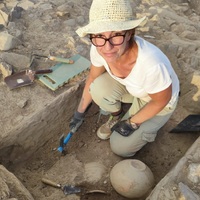



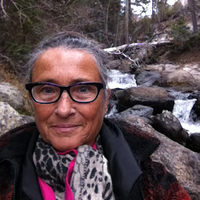
Uploads
Papers by Nataliia Mykhailova
Buried in the Elk and Reindeer Hides in the Iron Age and the Early Middle Ages in Northern Europe: an
Ethno-Archaeological Aspect
Archaeological evidence of the use of animal hides in burials have recently become known in the Late Iron Age and the
Middle Ages (800—1300 AD) in Finland and Karelia (Russia). The purpose of the article is to interpret the ritual of wrapping
the dead in hides from Eurasian elk and reindeer. For the first time, the authors use a combination of innovative methods of
archaeozoological analysis to study the remains of fur, and the method of ethnoarchaeological reconstruction to study the
burial rite.
Wrapping bodies in hides from wild animals is a widespread long-term tradition, which was practiced in Northern Europe
by the Stone Age hunters. This funerary rite was supposed to ensure the “transformation” of a person into an ancestor
animal. Reminiscences of hunting religious beliefs were preserved in the ideology of Northern Europe after the transition to
agriculture.
HUNTING DISGUISE OR SHAMANISM? A PSEUDO DICHOTOMY OF INTERPRETATION
Headdresses with deer antlers are recognized archaeologically in Mesolithic Europe. There are well known deer masks
from Starr Carr (Great Britain), Hohen Viheln, Plau, Berlin-Birsdorf and Bedburg-Konigshoven (Germany). Deer headdresses
were typically made from stag frontlets with antlers and skin. Frontlets were smoothed and intended to be worn
on the head. The garment has specially drilled holes for straps to attach them to the head.
We can assume that deer frontlets were adornments with complex semantic status. In the profane sphere of life they
served as hunting aids to track quarry with greater stealth. Under the conditions of religious metaphor in shamanism and
totemism, the human acceptance of the likeness of the animal and the imitation of its behavior caused a sense of identification
of the hunter with this animal. The temporary “transition” from the world of people to the world of animals is
a central element of this symbiosis. During rituals, the semantic status of the headdress grew, with the hunter/ritualist
realizing themselves as being of “double nature” mediators between the world of people, the world of animals, and the
world of a celestial, deific universe. Finally, after distinguishing the category of certain people, who had a monopoly on
communicating with representatives of the “other” world (shamans and ritual adepts), these ritual embellishments, as
attributes of these persons, turn into adornments and sacred regalia with the highest religious status.
Siberian people as well as Californian, Great Basin, and American Southwest Indians used frontlets or antlers for the
imitation of the animal’s behavior — such objects were likely included in reproductive rituals and rites of passage. There
is also an expressive connection between hunting, hunting imagery and human sexual fecundity and game fertility.
A prehistoric bighorn sheep headdress has been discovered and dated from Utah in the United States. Bighorn are the
most commonly portrayed animal in the figurative arts of these Far Western cultures. The comparison of common features
of animals with great symbolic significance from such distant territories as northern Eurasia and America allows us to
recognize some of the more universal features of the hunting religion mytho-religious complex. Origin and development
of the cult of the deer in Northern Eurasia and the cult of the bighorn sheep in North America correlate with the increasing
economic and symbolic roles for these animals. The ideological and conceptual metaphoric significance of both these animals
was so important, that they spread their semantic field (their cognitive symbolism) onto the other big game animals.
Key words: Mesolithic, Europe, North America, deer frontlets, cult of the deer, cult of the bighorn, shamanism, hunting
rites, ethnoarchaeology.
problems of the interpretation
There are more than 20 Mesolithic and Neolithic cemeteries, located along the Low
Dnipro Rapids. Most of the so called Mariupol type cemeteries belonged to fnal Mesolithic and Neolithic time. The most early and the most numerous burial grounds are in
the Dnipro region. Some later cemeteries were found on the territories to the West and
to the East. Graves were individual, double or collective. Most of the burials were in
supine position, abundantly covered by red ochre. Burial inventory consists of pendants,
made from bone, pearl, carp fsh teeth, deer canines and boar tasks. Also there were flint
and bone tools, stones and ceramic. Anthropological analysis demonstrated that population of Middle Dnipro region belongs to the Proto-European large Europeoid race. Periodisation of the Mariupol type cemeteries have two periods: Early Mariupol: 7000-
5500 cal. BC and Late Mariupol: 5500-4000 cal. BC. Numerous deceased were accompanied by rich burial inventory. Funeral inventory can serve as a source for studying the
rites of the life cycle (rites de passage), among others – the ceremonies, that have marked
the change of age and social status, gender identifcation, marital status. Very meaningful are children’s burials, some of them have outstanding burial inventory (Mariupil,
Vovnigi, Nenasytets, Osipivka, Vilnyanka). Personal ornament can be an evidence of kin
involvement, mark the stages of age-gender identifcation of children or point to a sacral
or inherited status of some “special” children.
Keywords: Neolithic, cemeteries, Mariupol type, children burials
Buried in the Elk and Reindeer Hides in the Iron Age and the Early Middle Ages in Northern Europe: an
Ethno-Archaeological Aspect
Archaeological evidence of the use of animal hides in burials have recently become known in the Late Iron Age and the
Middle Ages (800—1300 AD) in Finland and Karelia (Russia). The purpose of the article is to interpret the ritual of wrapping
the dead in hides from Eurasian elk and reindeer. For the first time, the authors use a combination of innovative methods of
archaeozoological analysis to study the remains of fur, and the method of ethnoarchaeological reconstruction to study the
burial rite.
Wrapping bodies in hides from wild animals is a widespread long-term tradition, which was practiced in Northern Europe
by the Stone Age hunters. This funerary rite was supposed to ensure the “transformation” of a person into an ancestor
animal. Reminiscences of hunting religious beliefs were preserved in the ideology of Northern Europe after the transition to
agriculture.
HUNTING DISGUISE OR SHAMANISM? A PSEUDO DICHOTOMY OF INTERPRETATION
Headdresses with deer antlers are recognized archaeologically in Mesolithic Europe. There are well known deer masks
from Starr Carr (Great Britain), Hohen Viheln, Plau, Berlin-Birsdorf and Bedburg-Konigshoven (Germany). Deer headdresses
were typically made from stag frontlets with antlers and skin. Frontlets were smoothed and intended to be worn
on the head. The garment has specially drilled holes for straps to attach them to the head.
We can assume that deer frontlets were adornments with complex semantic status. In the profane sphere of life they
served as hunting aids to track quarry with greater stealth. Under the conditions of religious metaphor in shamanism and
totemism, the human acceptance of the likeness of the animal and the imitation of its behavior caused a sense of identification
of the hunter with this animal. The temporary “transition” from the world of people to the world of animals is
a central element of this symbiosis. During rituals, the semantic status of the headdress grew, with the hunter/ritualist
realizing themselves as being of “double nature” mediators between the world of people, the world of animals, and the
world of a celestial, deific universe. Finally, after distinguishing the category of certain people, who had a monopoly on
communicating with representatives of the “other” world (shamans and ritual adepts), these ritual embellishments, as
attributes of these persons, turn into adornments and sacred regalia with the highest religious status.
Siberian people as well as Californian, Great Basin, and American Southwest Indians used frontlets or antlers for the
imitation of the animal’s behavior — such objects were likely included in reproductive rituals and rites of passage. There
is also an expressive connection between hunting, hunting imagery and human sexual fecundity and game fertility.
A prehistoric bighorn sheep headdress has been discovered and dated from Utah in the United States. Bighorn are the
most commonly portrayed animal in the figurative arts of these Far Western cultures. The comparison of common features
of animals with great symbolic significance from such distant territories as northern Eurasia and America allows us to
recognize some of the more universal features of the hunting religion mytho-religious complex. Origin and development
of the cult of the deer in Northern Eurasia and the cult of the bighorn sheep in North America correlate with the increasing
economic and symbolic roles for these animals. The ideological and conceptual metaphoric significance of both these animals
was so important, that they spread their semantic field (their cognitive symbolism) onto the other big game animals.
Key words: Mesolithic, Europe, North America, deer frontlets, cult of the deer, cult of the bighorn, shamanism, hunting
rites, ethnoarchaeology.
problems of the interpretation
There are more than 20 Mesolithic and Neolithic cemeteries, located along the Low
Dnipro Rapids. Most of the so called Mariupol type cemeteries belonged to fnal Mesolithic and Neolithic time. The most early and the most numerous burial grounds are in
the Dnipro region. Some later cemeteries were found on the territories to the West and
to the East. Graves were individual, double or collective. Most of the burials were in
supine position, abundantly covered by red ochre. Burial inventory consists of pendants,
made from bone, pearl, carp fsh teeth, deer canines and boar tasks. Also there were flint
and bone tools, stones and ceramic. Anthropological analysis demonstrated that population of Middle Dnipro region belongs to the Proto-European large Europeoid race. Periodisation of the Mariupol type cemeteries have two periods: Early Mariupol: 7000-
5500 cal. BC and Late Mariupol: 5500-4000 cal. BC. Numerous deceased were accompanied by rich burial inventory. Funeral inventory can serve as a source for studying the
rites of the life cycle (rites de passage), among others – the ceremonies, that have marked
the change of age and social status, gender identifcation, marital status. Very meaningful are children’s burials, some of them have outstanding burial inventory (Mariupil,
Vovnigi, Nenasytets, Osipivka, Vilnyanka). Personal ornament can be an evidence of kin
involvement, mark the stages of age-gender identifcation of children or point to a sacral
or inherited status of some “special” children.
Keywords: Neolithic, cemeteries, Mariupol type, children burials
Thesis for the candidate’s degree by the speciality 07.00.04. – Archaeology. – The Institute of Archaeology of the National Academy of Sciences of Ukraine, Kyiv, 2015.
This thesis reconstructs the cult of a deer in the society of the ancient hunters of Europe and Northern Asia. The author has applied an interdisciplinary approach that combines informative and interpretative possibilities of different sciences (archeology, ethnography, religious studies, linguistics). This model was created based on a wide range of ethnographic materials and by comparing of the historical method and the one of the remnants of the deer cult. Archaeological sources were analyzed, systematized and compared with the synchronic and diaсhronic aspects and imposed upon the ethnographic model. Thus we have historically reconstructed deer cult in the ancient hunting societies; as well as traced it's development in the later societies.
Model of the cult, created by the author on the basis of ethnographic materials, is a mythos-ritual complex, it is focused on the deer. The object of worship is a sacred deer, its incarnation - a female deity, Deer-Mother and zooantropomorfical ancestor and cultural hero. The subject of the cult were individuals and social groups. Their belonging to the cult was identified by the signs of a deer. By its contents the cult was totemic. The rites - related to natural and economic cycles, and the ones associated with the life cycle of people were the form of worship. The rites were an essential component of the cult, inextricably linked to the verbal element, that is, myths - totemistic and cosmological.
Model of the deer cult was compared with the archaeological sources of the synchronic and diachronic aspects. Thus its genesis and evolution were reconstructed. The first archaeological manifestations of a deer worshiping are dated back to the late Paleolithic time. The accumulation of the deer antlers in the caves of Western Europe and the Urals, the repeated images of the deer in a monumental and portable art of the Franco-Cantabrian area, the presence of the paired images and antropozoomorfic characters, indicates the formation of the main elements of the cult - the totemic myth and ritual reproduction of the deer.
The archeological materials and the stone art of the Mesolithic time suggested that the developed cult of the deer had the leading role in the myth-ritual complex. The stone and portable art of Northern Eurasia reflects the mythological notions of a female deer / moose, as the Great Mother. The stone art of the Iberian Peninsula present us with the totemistic myths and reproductive rituals. Archaeological materials include deer frontlets of Western Europe - the evidence of the hunting rites, and antlers found on the burial grounds of Western Europe; and elk-head rods used in the burials in Northern Eurasia, were attributes of the transition rites during which people with the higher status ( of shamans) would receive a sign of the totemic animal:
Looking at the stone and portable art of Northern Eurasia during the Neolithic period, the image of a deer / elk becomes dominant in the mythos-ritual complex of the ancient societies of that region. The image of an Elk - the Mother, is in the center of the Universe. The stone art is reflecting the rites of reproduction, as well as the totemic cosmological and mythological subjects. The images of the elk-headed boats indicate the idea of the deer/moose as a mediator. The archaeological materials of Northern Eurasia point to the existence of the sacrificial rites of a deer / moose, which resulted in the multilayered sanctuary of Neolithic, Bronze Age and Iron Age.
The remains of the sacrificial deer, found at the archaeological sites of the Neolithic - Bronze Age in Central Europe indicate that the elements of the cult of the deer continue to exist while transitioning to a producing agriculture - deer becomes the patron of fertility. Burials of the people along with the deer support the idea of a deer being a mediator between the worlds.
Thus, the cult of the deer, which originated in the societies of hunters in the final Paleolithic Europe, in Mesolithic and Neolithic time has become dominant in mythos-ritual complex of the people of Europe and North Asia. Its ideological significance was so great, that the remnants of the cult of the deer were preserved in the ideology of many nations in the following eras.
Key words: stone age archaeology, spiritual culture, Upper Palaeolothic, Mesolithic, Neolithic, Rock carvings
Mariupol cemeteries 2022
The report is devoted to the Neolithic Mariupol cemetery, which gave the name to the Mariupol type of the cemeteries. Materials of this unique cemetery were kept in Mariupol museum. During the Russian occupation museum, as well as Mariupol city were destroyed. The territory of the city of half a million people transformed to the giant cemetery.
Наталія Михайлова, Олександр Яневич
Маріупольські могильники 2022
Доповідь присвячена неолітичному маріупольському могильнику, який дав назву маріупольському типу могильників. Матеріали цього унікального кладовища зберігалися в Маріупольському музеї. Під час російської окупації музей, як і місто Маріуполь, були зруйновані. Територія півмільйонного міста перетворилася на гігантське кладовище.
The carols also have allusions on the initiation and wedding as liminal rituals. The maiden ask her brothers to kill the Deer, to build a house of his bones, and to cook a wedding feast of his meat. The motif of the dwelling made from deer bones is known in Ukrainian and Romanian folklore. It is connected with marriage and death, which means transition between worlds. It reminds the ancient Saami legend about Myandasj – Man-Deer, cultural hero and ancestor of the people and deer. He was born as a deer. He builds a hut from deer bones and skin. Entering the house, he turned into a man and got married to a woman. Deer-House symbolized the zoomorphic hut for the age initiations of indigenous peoples.
So, the remnants of the cult of the Deer, which had great significance in the mytho-ritual complex of the Stone Age population in Europe, were kept in the folklore of South-East European people.
У фінальному палеоліті - неоліті Північної Євразії археологічні свідоцтва культу та зображення оленів були пов’язані з видатними місцями ландшафту – печерами, скелями, стрімчаками, та водою – островами, водоспадами, стрімнинами та ін. У фінальному палеоліті прояви культу оленя найчастіше зустрічаються у печерах. Це скупчення скинутих оленячих рогів у печерах Північного Уралу та Шотландії та зображення оленів у монументальному і мобільному мистецтві в печерах Франко-Кантабрійської зони. У післяпалеолітичний час, у так званому «левантійському» та «схематичному» мистецтві в східній частині Іберійського п-ова та Португалії, зображення оленів зустрічаються на вертикальних скельних поверхнях, у неглибоких гротах, навісах, або відкритих площинах. У мезоліті Північної Євразії образ оленя/лося стає домінуючим у мифоритуальному комплексі. У наскельному мистецтві, на вертикальних та горизонтальних поверхнях відображені обряди відтворення, тотемістичні і космологічні міфологічні сюжети. У неоліті у циркумполярній зоні на видатних місцях ландшафту, пов’язаних із полюванням і природними циклами оленів, з’являються великі скупчення решток тварин, що вказують на обряди жертвоприношення оленів/лосів. Особливе значення мають жертовні місця, розташовані під наскельними зображеннями.
Зіставлення археологічних матеріалі з етнографічними даними дозволяють стверджувати, що прояви культу оленя/лося у пізньому палеоліті, мезоліті та неоліті Євразії були пов’язані з місцями підвищеної семантичної значимості, які в первісній ідеології сприймалися як місця „перетину світів”.
times. During the Stone Age, this area had great economic and sacral significance. There are more than
20 Mesolithic and Neolithic cemeteries of the so called Mariupol type, located along the Lower Dnieper
Rapids. The most early and the most numerous burial grounds were in the Dnieper region. Some later
cemeteries were found on the territories to the west and to the east. The anthropological analysis
demonstrated that the population of Middle Dnieper region belongs to the Proto-European large
Europoid race. Numerous deceased were accompanied by rich grave goods, which consisted of pendants
made from bone, beads, carp fish teeth, deer canines and boar tusks. Grave goods can serve as a source of
study of the rites of the life cycle, among others – the ceremonies, that have marked the change of age
and social status, gender identification and marital status. Very meaningful are children’s burials, as some
of them have outstanding grave goods (Mariupol, Vovnigi, Nenasytets, Osipivka, Vilnyanka). Personal
ornaments can be evidence of kin involvement, they can mark the stages of age-gender identification of
children or point to the sacral or inherited status of some “special” children.
Keywords: Neolithic, Ukraine, Dnieper Rapids, cemeteries, burial rites, burial goods, personal
ornaments, infant burials.
known from cemeteries in Europe, dating to the Upper Palaeolithic, Mesolithic, and
Neolithic. This paper focuses on burials exhibiting attributes associated with cervids
(including red or roe deer antlers, skulls, or bones, and/or elk-headed staffs) from
Saint-Germain-la-Rivière, in south-western France; Téviec and Hoëdic, in Brittany;
Vedbæk and Skateholm, in Scandinavia; Bad Dürrenberg, in central Europe;
Lepenski Vir, Vlasac, Padina, and Haiducka Vodenica, in the lower Danube region;
Olenii Ostrov, in northern Russia; Zveinieki, in the Baltic; and Bazaikha, in Siberia.
Ethnographic materials relating to the study of Siberian shamanism are employed in
the article to help understand the semantic metaphors implied by these attributes.
These persons may have been classified as ritual adepts, also known as shamans.
‘Shaman’ activity is connected with transformations: transformation of consciousness,
male-female transformation, human-animal transformation. A virtual connection
with animals is the basic feature of shamanism, and it can be studied with the
help of archaeology.
Keywords: Stone Age, ethnoarchaeology, shamanism, cult of the deer, burials, elkheaded
staffs
Motives of totemic myths are depicted in rock art of the Northern Europe, Northern Asia and Caucasus.
In the monographic were used archaeological sources, in which there are the remains of cervid family animals. In the spiritual culture, different types of this family belonged to the same semantic range and were often interchangeable. During the study the following specially-scientific methods were involved: comparative-historical, “method of remnants”, structural semiotic method (analysis), method of archaeological and ethnographic analogies, method of ethnographic synthesis and cross-cultural studies. Using these methods the following work was done: 1) the presence of deer cult among the peoples, who in the recent past had hunted the deer, and the remnants of the cult in the more developed peoples of Eurasia are identified; 2) based on the ethnographic analysis of the mentioned sources the basic elements of the cult – effective, verbal and substantive codes – have been singled out the intersection of which serves as a model of the deer cult; 3) certain physical manifestations of the deer cult model are defined; 4) created model was extrapolated to the primitive societies of the late Palaeolithic, Mesolithic and Neolithic of Eurasia and verified by other archaeological sources in synchronous and diachronic aspects.
ЛЮДИНА ТА ЛАНДШАФТ: первісна археологія Східної Європи. – VITA ANTIQUA, №9. Збірка наукових статей. – К.: 2017. Збірка наукових праць присвячена сучасним дослідженням питань взаємодії оточуючого середовища та первісних суспільств на території Європи і сучасним дослідженням в галузі ландшафтної археології. Представлені матеріали, що демонструють міждисциплінарний підхід у дослідженні пам’яток первісності. Запропонована збірка буде корисною для всіх, хто цікавиться первісною історією, археологією та географією Європи – археологам, географам, біологам, історикам-краєзнавцям, студентам вищих навчальних закладів.
Archaeological sources, in which there are the remains of cervid family animals, were used in the study. Different types of this family belonged to the same semantic range; very often they were interchangeable in the spiritual culture. The following specially-scientific methods were involved during the study: comparative-historical, “method of remnants”, structural-semiotic method (analysis), method of archaeological and ethnographic analogies, method of ethnographic synthesis and cross-cultural studies. Using these methods the following work was done: 1) the presence of deer cult among the peoples, who in the recent past had hunted the deer, and the remnants of the cult in the more developed peoples of Eurasia are identified; 2) based on the ethnographic analysis of the mentioned sources, the basic elements of the cult – effective, verbal and substantive codes – have been singled out. Their intersection serves as a model of the deer cult; 3) certain physical manifestations of the deer cult model are defined; 4) created model was extrapolated to the primitive societies of the late Paleolithic, Mesolithic and Neolithic of Eurasia and verified by other archaeological sources in synchronous and diachronic aspects.
Based on a comprehensive comparative analysis of Northern Eurasia ethnographic sources, the deer cult model was created. It is a mythological and ritual complex, the concept of a deer is in the centre of which. Due to the content, the cult combines totemic and hunting features, its main idea – the restoration of a sacred animal. Sacred deer is the object of worship. At the heart of the mythological system is an archaic Universe, identificated with a giant female deer/elk. With the development of the world-view it differentiated into three zones: – Underground and Heavenly worlds, and, namely, the Earth, moreover each of the worlds has its own appearance of the deer. An anthropozoomorphic character, Human-Deer – totemic ancestor, cultural hero and a magic marriage partner is one of the embodiments of the cult. Separate individuals and social groups of different status, whose belonging to the cult was declared by the deer signs, were the subjects of the deer cult. The participation to the deer cult above all is presented in shamans attributes. The leading form of relationship between subject and object (i.e., between people and the sacred deer) are ceremonies (an effective aspect of the cult) and their integral part – myths (a verbal aspect of the cult). Rites of the deer cult are divided into hunting (calendar) ceremonies and luminal rites. An universal scheme of Arnold van Gennep: «separation – passage/transition – reaggregation» is in the basis of ritual ceremonies. Hunting rituals are associated with a hunting cycle and are intended to the sacral restoration of the sacred deer. The general structure of hunting ceremonies is the next: isolation (slaughtering of the sacrificial animal) – transition (the partition and collective eating of meat) – recovery (virtual revival of new individuals from the remains). The ceremonies aimed at reproduction stimulating, included also the imitation of animal mating. In the liminal rituals of the lifecycle of the people the scheme of the rite has acquired the following: isolation from society – the transition (real or virtual death) – restoration (acquiring a new status in society or in the world of the dead). The subjects of the cult acquired deer features as a result of the transition (temporary or definitive) to the world of animals/dead. An universal primary myth structure (monomyth) correlates with this scheme. In totemic myths it is a: Hero isolation – test (death) – restoration (returning to society in a new look). This structure is as follows in cosmological myths: the cosmic deer chasing – deer death – recovery.
The means of the cult are visual and/or subject attributes of rites and sanctuaries: images of deer/elks, dropped antlers in caves; the remains of sacrificial deer; deer signs, that mark the sacred space and consecrated persons; deer remains near human burials and deer images on accompanying inventory and burial structures; complete deer skeletons – real models or deer figurines as sacrifice objects; ritual vessels; shamans’ attributes (crowns with antlers, deer-like clappers and rods) and etc.